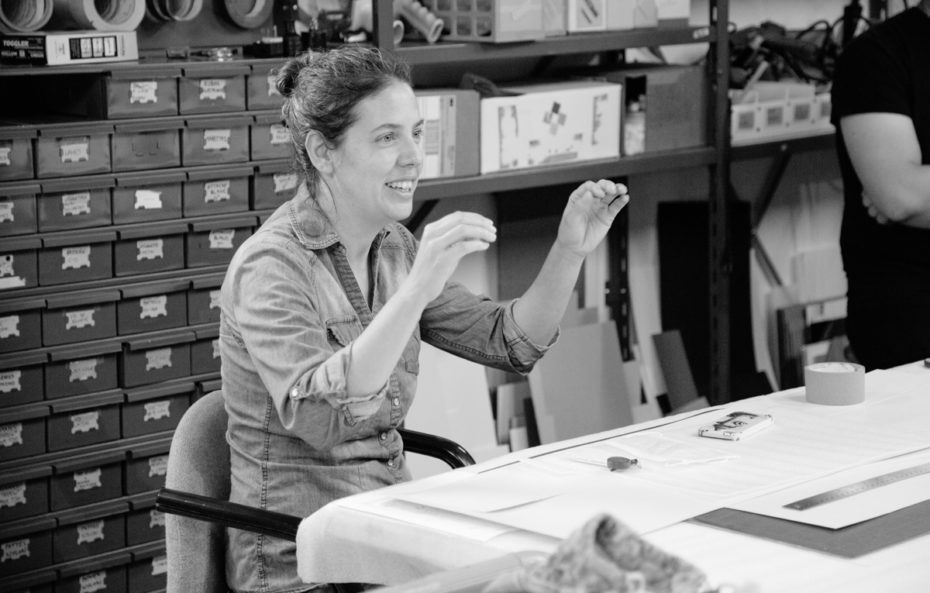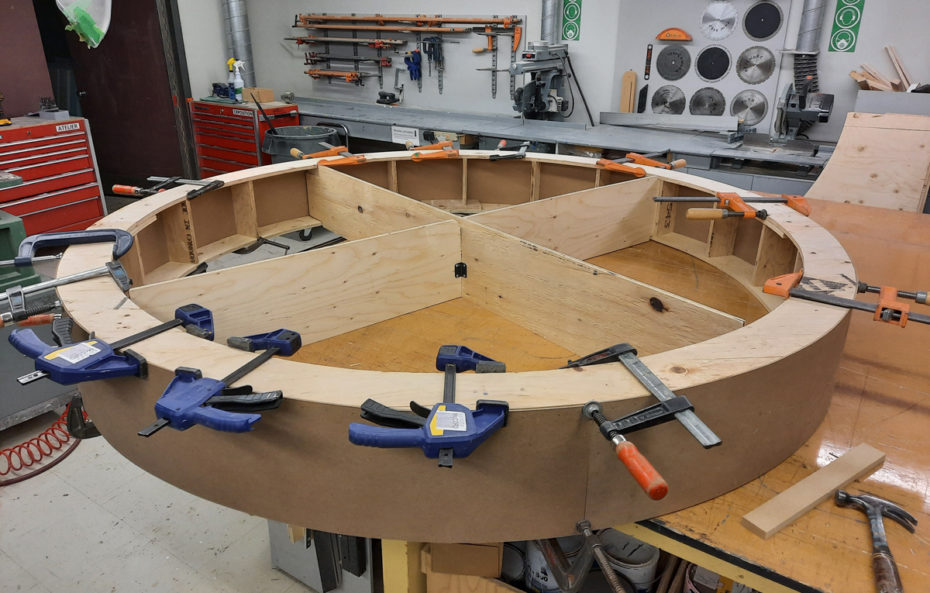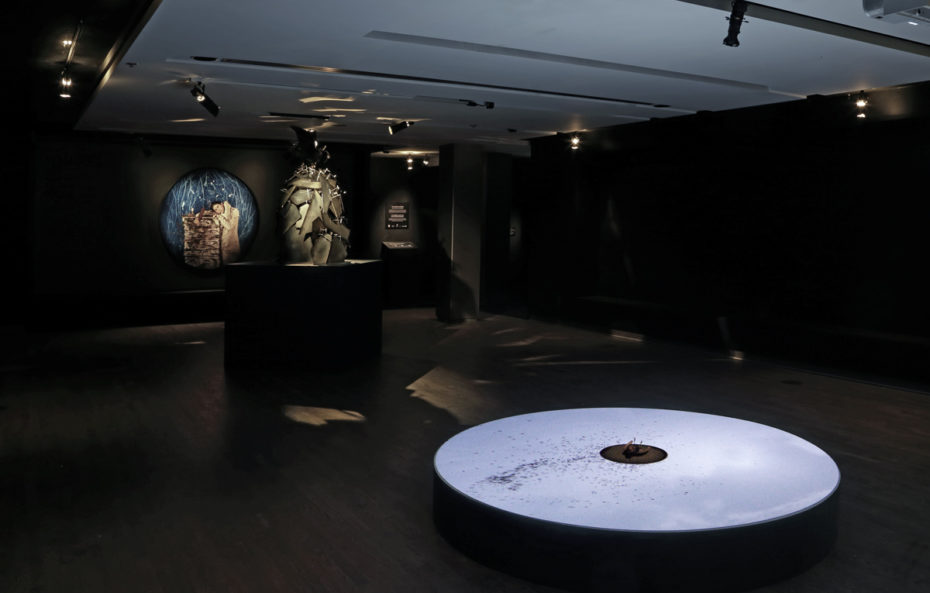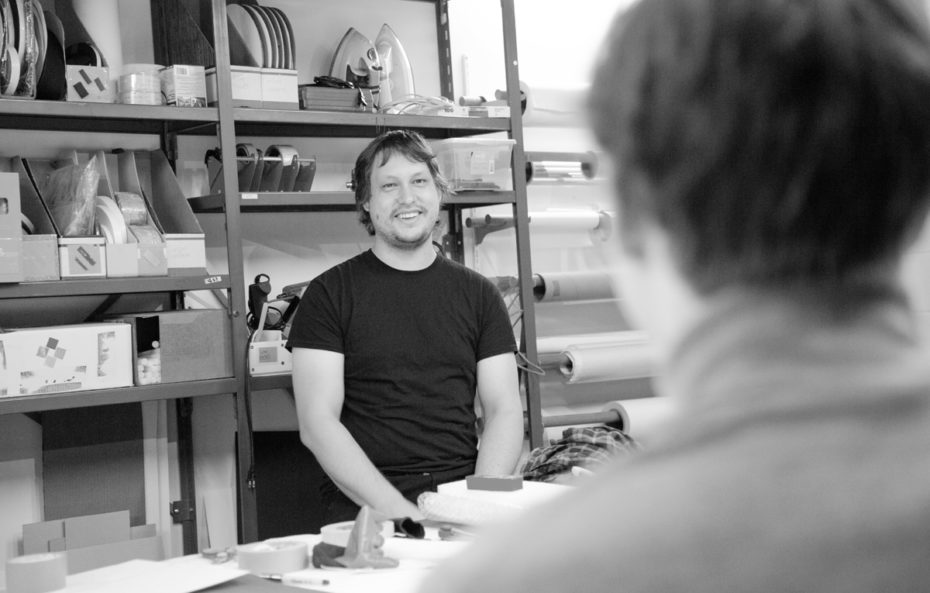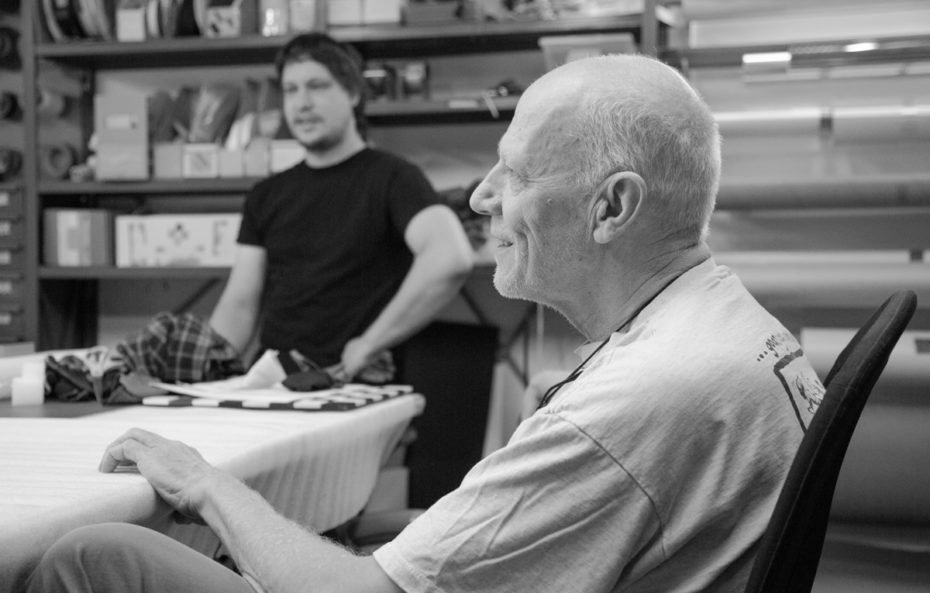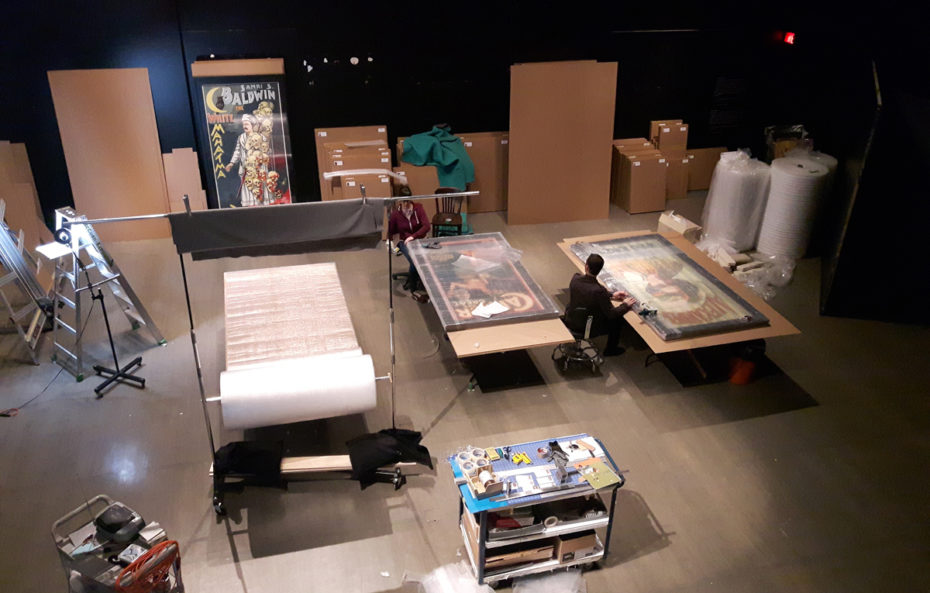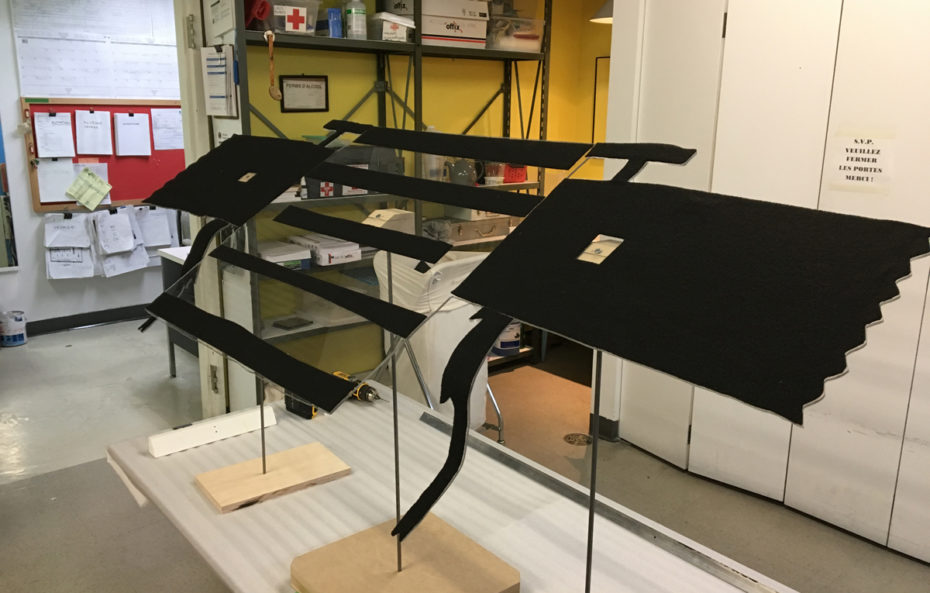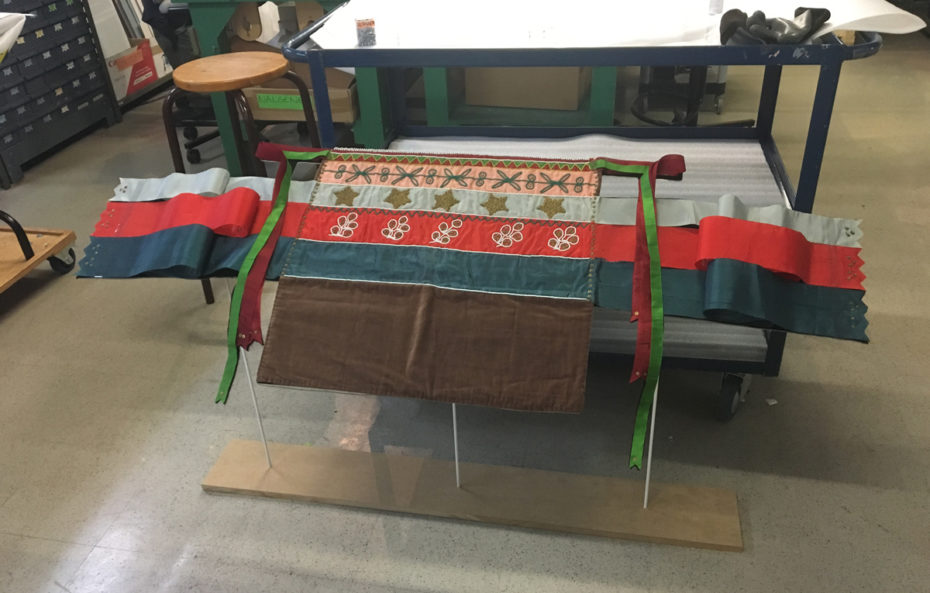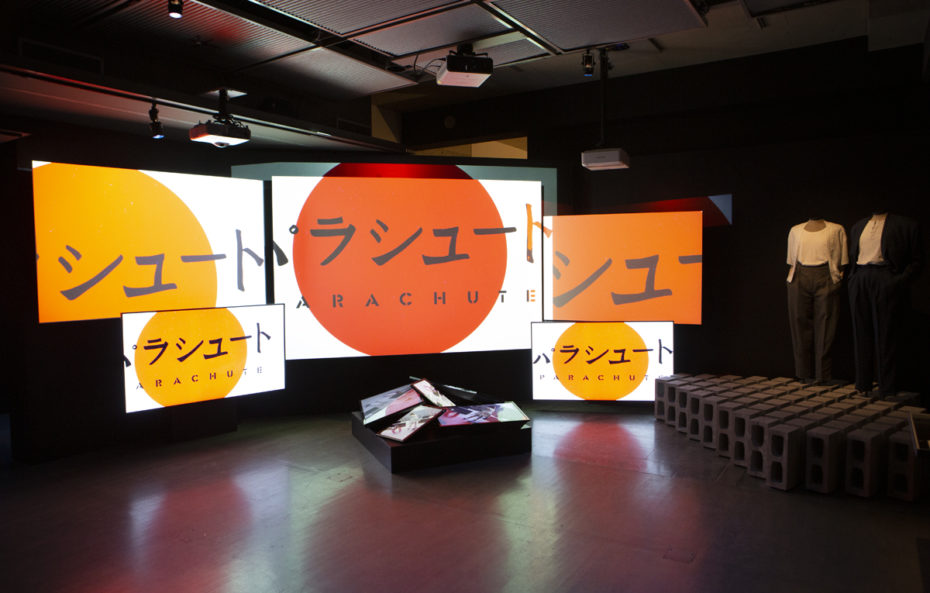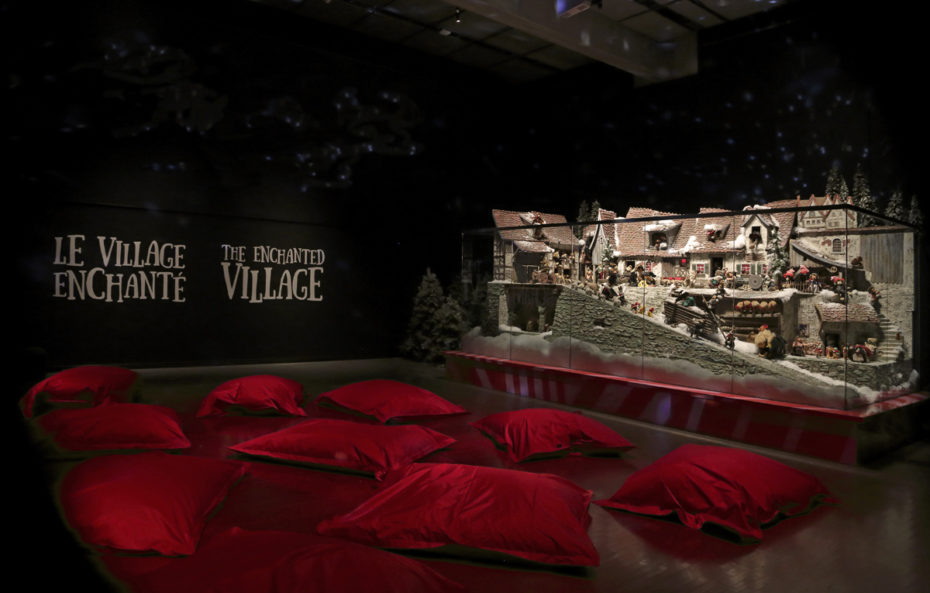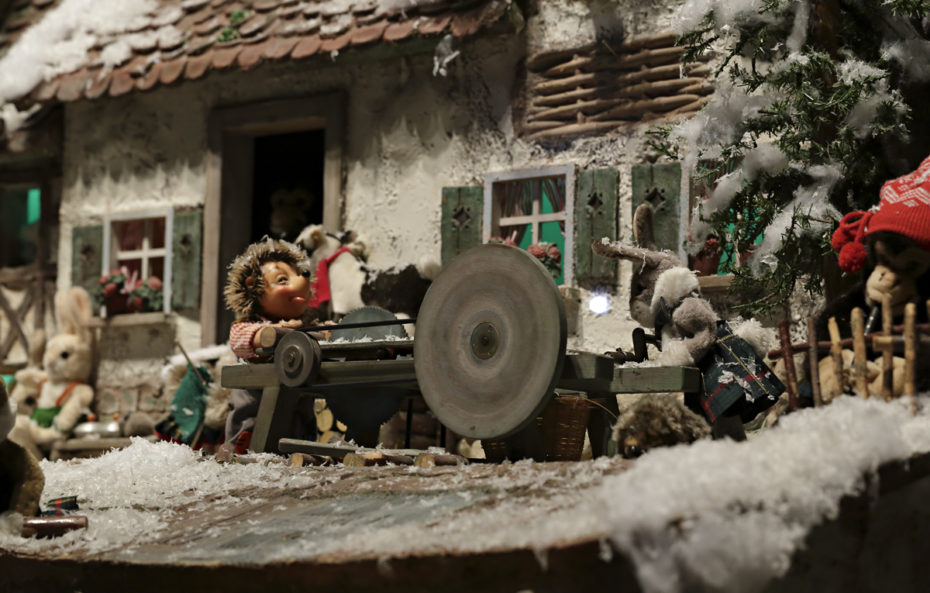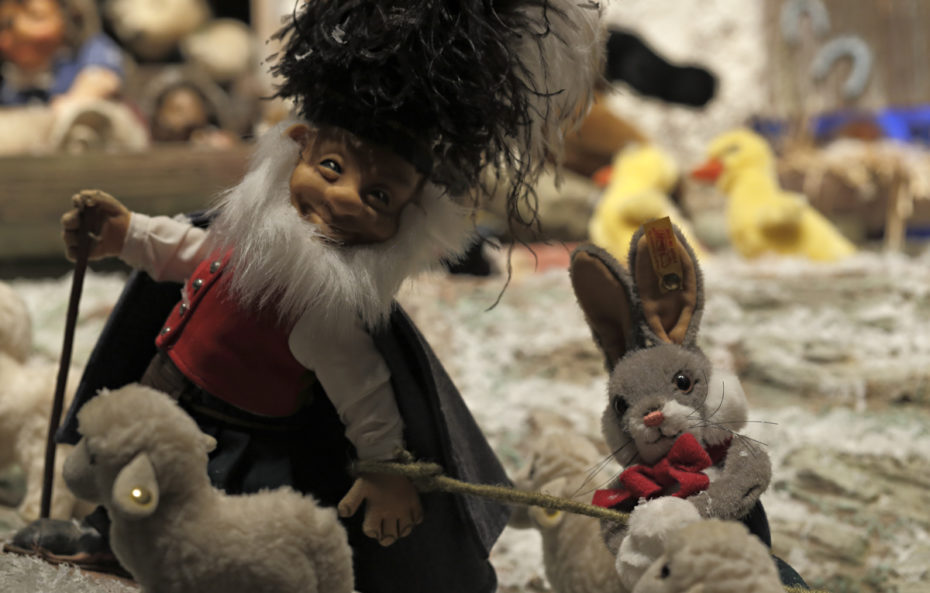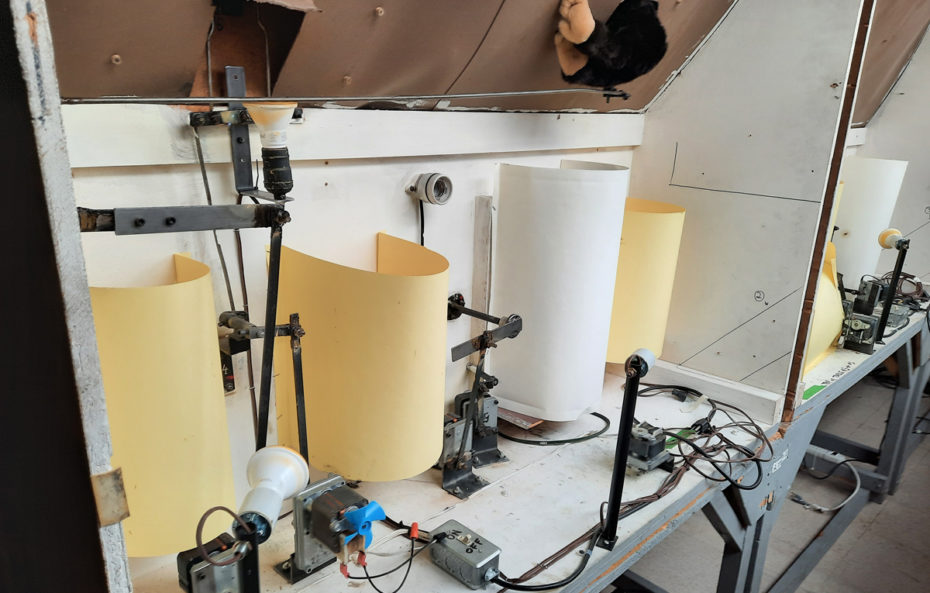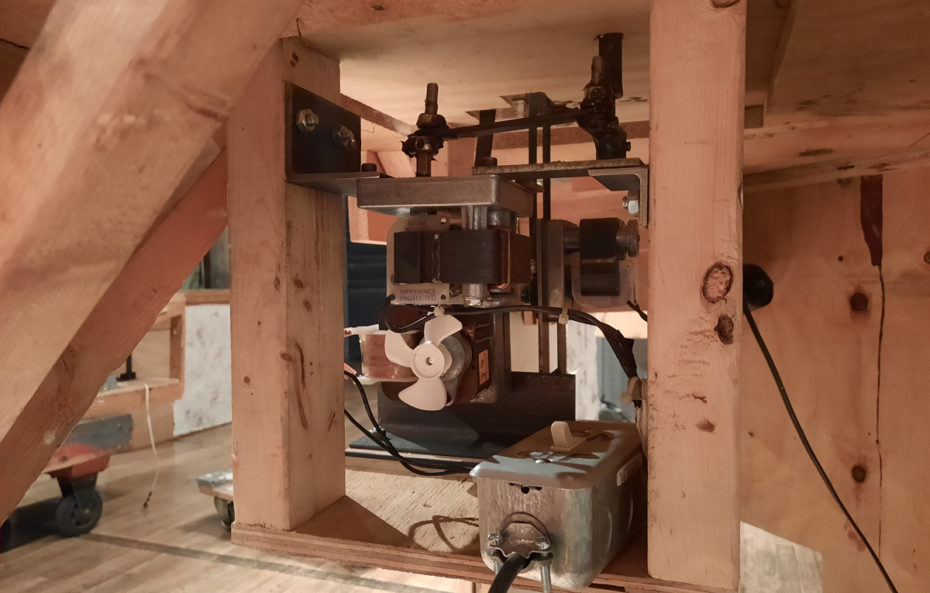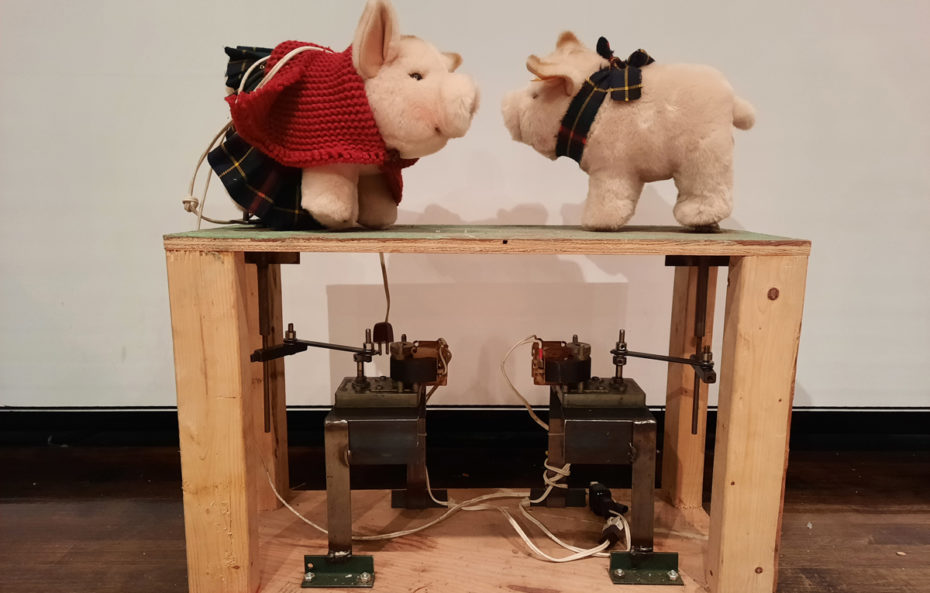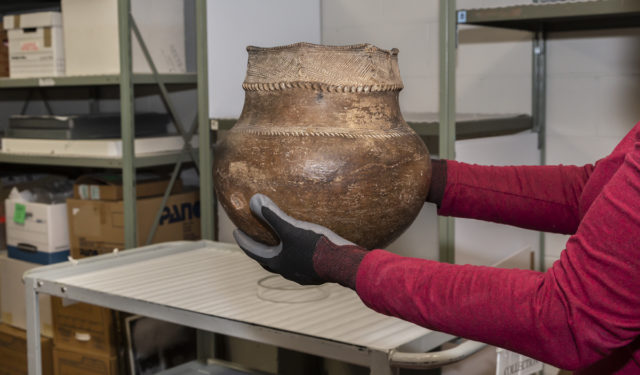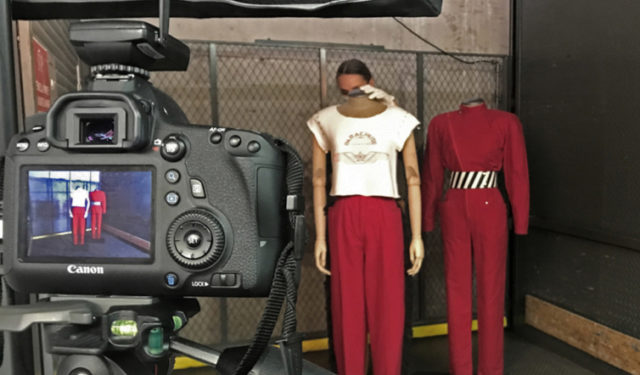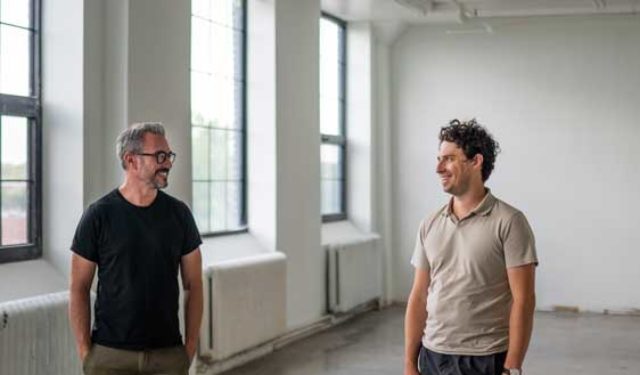The Museum’s exhibition technicians: Building and transforming
Exhibition technicians: working behind the scenes of every exhibition. Profile of a small, friendly, passionate team.
February 8, 2022
In the depths of the McCord Museum, I meet with Mélissa, who is sitting at a big worktable in the workshop used by the Museum’s team of exhibition technicians. Her colleagues will be joining us soon; they are busy working on an exhibition somewhere in the building.
Mélissa: My name is Mélissa Jacques and I’ve worked at the Museum for 10 years. I’m an exhibition technician. I studied art and history, and then earned a bachelor’s degree in art history before graduating from the museology program at Collège Montmorency.
What does an exhibition technician do?
Mélissa: We do a lot of things—we’re very versatile. We take care of the objects displayed in exhibitions, we assist the project managers, conservators and curators, and we construct mounts. We therefore spend a lot of time in the workshop. We work with metal, Plexiglas and wood; we’re sometimes asked to make furniture; we install the exhibitions in the galleries, etc.
At what point do you become part of the Museum's complex process of producing an exhibition?
Mélissa: We enter the process in the early stages. I’m specialized in handling objects, so I’m often there during the preliminary selection stage. We’re always communicating with the various teams to co-ordinate our efforts, establish a schedule, work on the objects…
At this moment, Mélissa’s cell phone rings: duty calls.
This won’t take long—I’ll be right back. She leaves the room for several minutes and then comes back, still smiling.
What is the team's role in the design of an exhibition? Do the other teams call on your expertise?
Mélissa: John works a lot on the plans, often sharing ideas and advice with the exhibition project manager and designer. He’ll suggest modifications to save costs or improve feasibility. Yes, we do have a certain expertise, and we’re often consulted.
John and Olivier come in and join us around the table.
John: Sorry for the delay; we had a little emergency. Last night we learned that a television crew was coming to film the Ogilvy holiday window, so we had to prepare it quickly before they arrived.
Mélissa: Things like this happen every day. We have to be very flexible.
Can you introduce yourselves?
Olivier: My name is Olivier LeBlanc-Roy. I’m an exhibition technician like Mélissa, and I’ve been here for about six years. I also graduated from the museology program, but before that, I studied music, graphic design and history. My work as a technician incorporates all the skills that I developed in other fields. Everyone on the team has taken a different path to get here, bringing their own skills and expertise.
John: My name is John and I’m head of the technical team. I’ve been working here for 33 years. Back in the day, I never considered working a museum; I had a career as an artist. I first worked at the McCord Museum as a carpenter for several weeks and was then hired to work one day a week. I came in to change light bulbs and do some small jobs in the exhibitions. The schedule suited me because it gave me lots of freedom. Then, in 1993, a full-time position opened up and I’ve been here ever since.
What are the biggest challenges of your profession?
Mélissa: The unexpected! We have to be able to turn on a dime.
Olivier: It actually happens quite often. That’s really the biggest challenge: doing a good job within a very short time frame.
John: I would also add the workload. Often when we’ve just finished mounting one exhibition, two days later, we have to take down another one. There’s always a lot to do and it can be intense.
Olivier: There are all sorts of minor constraints that people never think about—little things to consider like humidity, temperature, lighting, etc. If everything isn’t perfect, the objects may be damaged.
What do you like best about your work?
Olivier: Ironically, I often find it very satisfying to overcome challenges: successfully complete a complicated project, or accomplish things that we weren’t sure we could do.
Mélissa: As for me, I really enjoy mount-making. It’s often challenging, because every object is different. They’re often fragile so we have to find ways to display them safely, while ensuring that the support cannot be seen.
John: In addition, the variety of tasks we do is satisfying. The McCord Museum is neither a very small nor a very large museum, so we have what we need and the right equipment to get things done, without everybody having to be stuck in one place, always doing the same thing.
Olivier: Working with the objects means shining a spotlight on history and heritage. Every time I go into the vaults, I find something new. It’s truly a privilege.
Can you tell us about your role in designing the Parachute exhibition?
Mélissa: There are two types of exhibitions: exhibitions like Parachute that are organized by the Museum using objects from our own collection, which represent more work, and exhibitions from other museums that have already been organized, which represent a different type of work. The latter require more adaptation.
Olivier: In the case of the Parachute exhibition, the pandemic gave us time to construct supports that we probably would have normally outsourced.
Mélissa: There was also the challenge of the televisions.
Olivier: That’s right. One section of the exhibition features a stack of television sets that was difficult to install. It had to look good, but be secure.
Mélissa: We had to pile them up without letting any of the supports holding them in place show. It was quite a challenge.
John: We built a lot more pieces for this exhibition than we usually do, which enabled us to save money. On the other hand, it also meant that the job of mounting and taking down what we built fell to us as well. But it was enjoyable because we made things that were completely new for us.
Can you tell me about the Ogilvy holiday window? I imagine it must present some logistical challenges.
John: It’s really fun to work on this window. We really like this exhibition.
Olivier: The biggest challenge is storing the window, because it’s huge. We have to bring it into the exhibition gallery, piece by piece, from an off-site storage location. That’s the most physically demanding aspect, especially since each piece and each mechanism is fragile. We have to replace motors, add lights, etc. The window requires constant maintenance.
How has the job of an exhibition technician evolved over the years and how will it continue to change?
John: When I started working, the museology techniques program didn’t exist and artists were often hired to work in museums. Over time, the job has become professionalized. In addition, we now recycle and reuse more and more of the elements used in exhibitions, whereas before, everything was systematically thrown away after we took down an exhibition.
Mélissa: Another thing, the pace of exhibitions has increased a lot over the years. Exhibitions do not stay up as long and there are more of them. As for the future, while museums are increasing their virtual presence, I’m not really concerned because it will always be important to see objects in person. There will always be a need for this. Museums are the only way to have a direct, physical contact with the past, which is something that the virtual world can never replicate.
Olivier: I anticipate that technological advances will perhaps alter our work a little over the years by giving us new tools, but I don’t think they will completely transform what we do. As long as there are objects to display and exhibitions to mount, there will be exhibition technicians.

